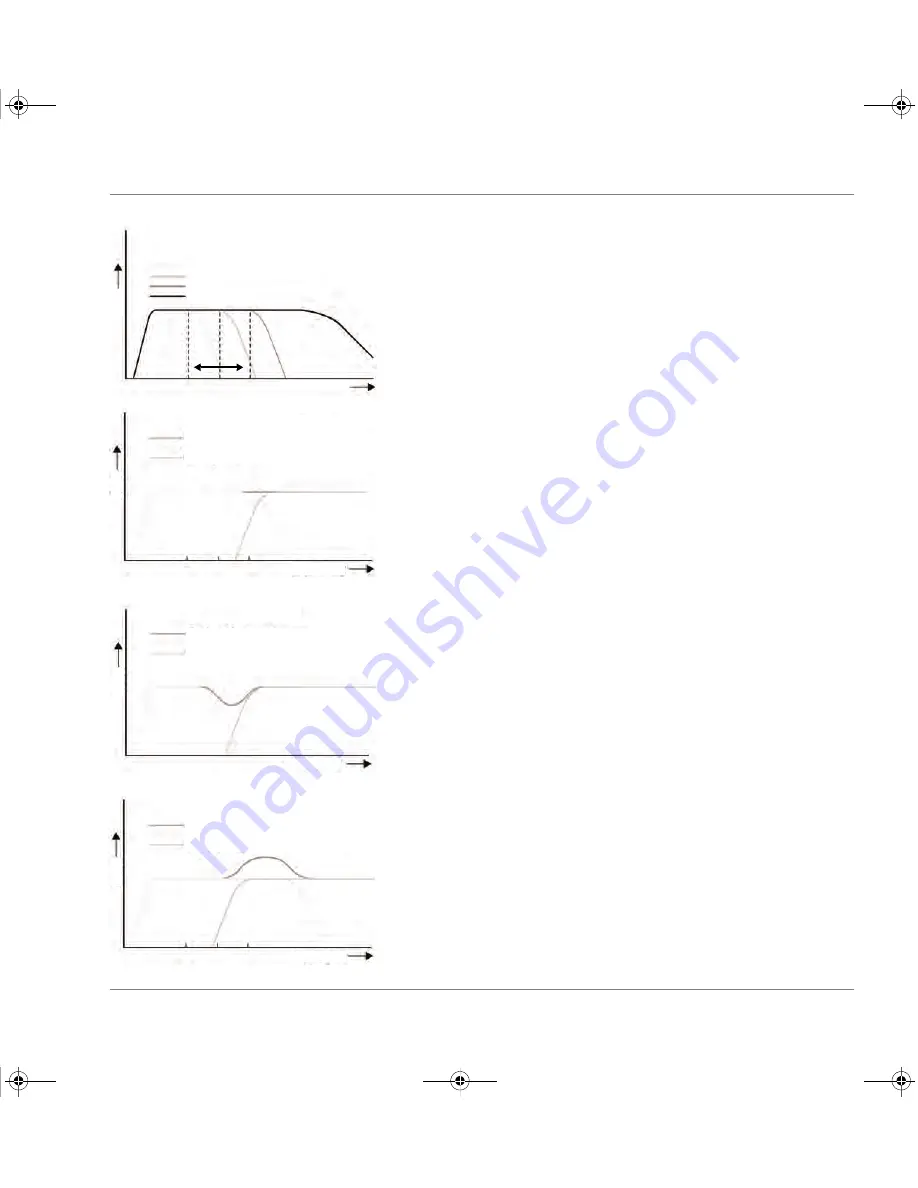
Positioning and Optimizing
18
Dynaudio Sub 300/500
Cross-over frequencies
Matching the frequency responses of subwoofer and speakers has an important
impact on the overall sound quality, when integrating a subwoofer into a audio-video-
system. In general a large, floor-standing speaker still has significant output in the
deeper bass range, whereas a very small speaker will not be able to reproduce deep
bass at all. In the first case a bump in the overlapping area will cause a louder or even
bloated sound while in the second case an acoustic hole will be experienced.
The following figures visualize the possible results (please note that all curves are for
illustration purposes and do not show exact filter characteristics).
Cross-over frequencies set correctly
Subwoofer and main speakers are perfectly matched, when the combined frequency
response is smooth without bumps and gaps. A neutral sound will be the result.
Subwoofer too low, main speakers too high
A gap in the frequency response occurs, if the cut-off frequency of the subwoofer is
set too low and of the main speakers too high (or if the main speakers are not able to
reproduce low frequencies accordingly). In this acoustic hole you will miss some
signal information and experience a thin bass sound.
Subwoofer too high, main speakers too low
In the other case you will experience unnatural and bloated bass sound, if the
overlapping area is too large. The combined frequency response shows a bump, as
the sound pressure levels in this area are increased.
L
evel
Frequency/Hz
60 Hz
80 Hz
100 Hz
Flat
60 Hz
80 Hz
100 Hz
60
80
100
Flat
Le
v
el
Combined frequency response
Subwoofer
Main speakers
Frequency
Le
v
el
Combined frequency response
Subwoofer
Main speakers
Frequency
L
eve
l
Combined frequency response
Subwoofer
Main speakers
Frequency
Sub300_500_en.book Page 18 Dienstag, Mai 11, 2010 5:02 PM









































